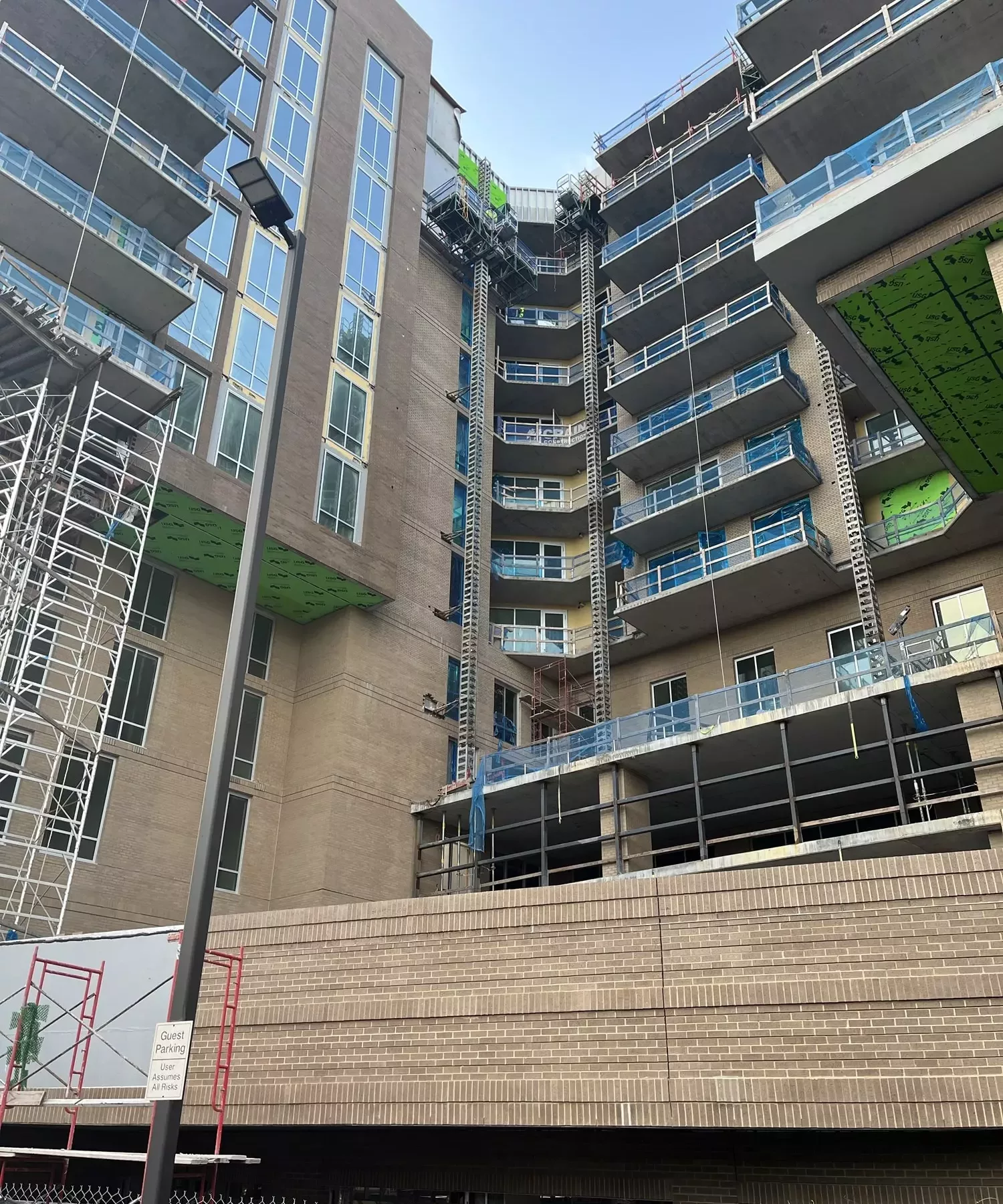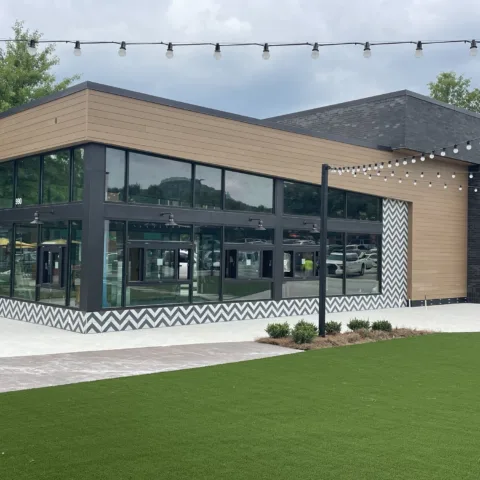When it comes to commercial construction, ensuring the stability and integrity of the ground beneath a structure is a foundational step. Ground stabilization is the process of preparing the soil to support a building or structure effectively, and it plays a crucial role in the safety and longevity of any project. However, it can also present some of the most complex challenges in the construction process—especially in areas like Tennessee, where soil conditions vary significantly.
At Crain Construction, we’ve been tackling ground stabilization issues for nearly a century. As a local contractor with deep experience, we’ve encountered virtually every type of ground or soil issue imaginable. In this article, we’ll share the most common ground stabilization challenges we face in Tennessee and the effective solutions we’ve developed to overcome them.
Common Ground Stabilization and Soil Issues for Commercial Projects
Commercial projects in Tennessee often face unique challenges when it comes to ground stabilization. Here are some of the most common issues we encounter:
1. Unpredictability and Variability
One of the most significant challenges we face in Tennessee is the unpredictability of subsurface conditions. Soil can vary greatly within a small area, and hidden features like underground streams, sinkholes, or unstable layers can present major risks during excavation and foundation work. Seasonal changes further complicate the situation, as fluctuating moisture levels and freeze-thaw cycles can shift soil stability, leading to unexpected settlement or movement.
2. Inconsistent Bedrock Depths
Middle Tennessee has no shortage of bedrock, but it comes with its own set of quirks. The rock here is “pinnacle” in nature, which means its depth can vary dramatically—even over short distances. Foundations may encounter hard rock in one spot and softer, less stable soil just a few feet away, complicating the excavation and reinforcement process. These varying depths require a thorough assessment and customized approach to stabilize the ground before construction begins to ensure structural stability.
3. Soil Composition and Properties
Weak or unstable soils are another challenge, particularly in areas where clay, peat, or sand dominates. These soils lack the strength to support large commercial structures, often requiring advanced stabilization techniques. Additionally, expansive soils that swell and shrink with moisture changes can cause damaging heave or settlement in foundations. Understanding the specific properties of the soil is critical for designing a stable foundation.
4. Site-Specific Challenges
Tennessee’s varied topography can also create challenges, especially in areas with steep slopes or uneven grades. Building on sloped terrain demands special excavation and foundation design considerations to prevent instability. High groundwater levels add another layer of complexity, requiring dewatering solutions to maintain excavation stability and prevent potential foundation issues.
5. Prior Developments
Previous development on a site can complicate ground stabilization efforts—especially for adaptive reuse projects. Buried structures, old foundations, or underground utilities left behind from past construction activities can create unforeseen obstacles during excavation. Similarly, adjacent infrastructure projects, such as road construction or tunneling, can induce vibrations or settlements that may affect the stability of nearby buildings, adding to the overall complexity of the project.
Proactive, Precise, and Prepared: Crain’s Approach to Ground Stabilization
At Crain Construction, we believe that the key to overcoming ground stabilization challenges is proactive planning and creative problem-solving. Here’s how we approach these issues to keep projects on track and enhance the stability of the structures we build:
1. Identifying Issues Early
The best defense against ground stabilization problems is to identify them before you put the first shovel in the ground. By carefully analyzing soil conditions, subsurface risks, and groundwater levels early in the process, we can identify potential problems and design solutions that prevent delays and costly errors. We believe that upfront planning is key to minimizing issues down the line.
Portfolio Example: Tencarva Machinery Company – For the Tencarva Machinery project, our team identified soil stability issues early, allowing us to implement substantial ground reinforcement before construction began. This approach facilitated a smooth and efficient project without unplanned delays.
2. Implementing Deep Foundational Support and Caissons
In cases where weak soils cannot support heavy commercial structures, we turn to deep foundations and caissons. By drilling deep into the ground to reach stable soil or bedrock, we can create a secure foundation capable of bearing significant loads. This method creates long-term stability, even in areas with challenging surface conditions.
Portfolio Example: Element Hotel in Nashville — When constructing the Element Hotel in Nashville, we drilled 84 caissons, ranging from 8 to 20 feet deep, to reach solid rock and stabilize the soil. Our solution allowed us to safely and effectively address the site’s unstable soil and complete the project on time.
3. Coordinating with Trade Partners
Ground stabilization challenges can delay projects, but we mitigate these risks through effective coordination with other trades. By working closely with subcontractors, work can continue on other areas of the project while stabilization efforts are underway. This approach minimizes downtime and keeps the project on track.
Portfolio Example: Hilton Alpharetta Hotel — During the Hilton Alpharetta project, soil stability issues arose after the concrete slab had already been poured. Rather than halting the project for two months, our team coordinated with framing, electrical, and plumbing trades to keep the job moving forward.
4. Collaborating with City Departments
In some cases, ground stabilization requires more than just construction expertise—it demands close collaboration with city officials and regulatory bodies. We work hand-in-hand with city departments to ensure that all stabilization measures meet local codes and requirements, especially in complex situations where public infrastructure is involved.
Portfolio Example: TownePlace Suites by Marriott — The TownePlace Suites project in Nashville required special coordination with the city due to its proximity to a 100-year-old sewer tunnel. We worked closely with city inspectors to protect the tunnel throughout construction, even installing an emergency bypass pump as a precaution. Our collaboration ensured the project’s success while safeguarding critical infrastructure.
Building Confidence from the Ground Up
Challenges are inevitable in commercial construction, but with Crain Construction’s proactive and creative approach, we effectively overcome even the most complex issues. From pre-construction planning to deep foundation solutions and collaboration with local officials, our team is committed to solving these challenges with minimal disruption to your project.
If you’re looking for a construction partner who understands how to navigate construction challenges in Nashville and has the expertise to solve complex issues, contact Crain Construction today. We’re ready to help you build with confidence!



